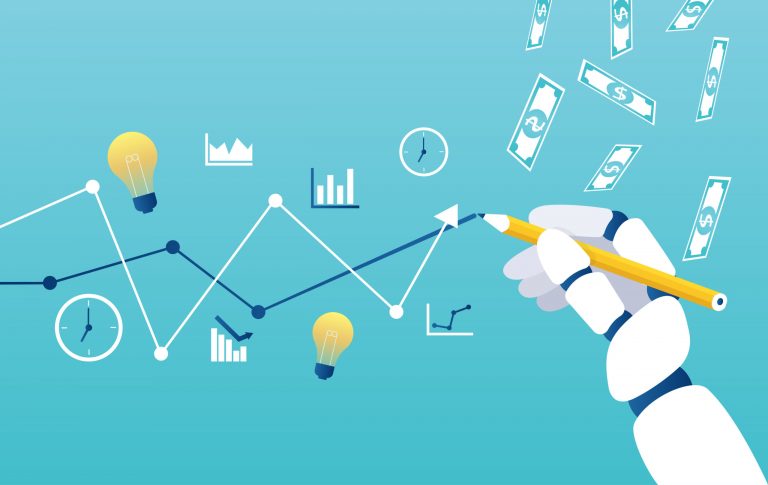This piece is based off of a roundtable discussion at the CU 2.0 Brainstorm Event in January 2022. It’s not intended to be comprehensive—rather, it will provide a quick look at emerging trends in autonomous and AI-based banking technology.
In this session, the expert panel discusses the advantages and limitations of AI and the role it could play in bringing the concept of fully autonomous banking to reality.
As the panel considers the impact that self-driving finance could have on consumer experience and financial empowerment, they also examine the potential benefits offered to financial institutions like income opportunities, growth surges, and resource management.
Achieving some of the milestones of autonomous banking as communicated here could usher in a new era of economic prosperity on both a macro and micro scale–but the road there isn’t without its obstacles.
Register for our July Brainstorm Event here.
Shifting from Personal Financial Management to Self-Driving Finance
CEO of Otomo, Khellar Crawford, opens this segment of the panel by exploring the possibilities of using AI to help banks and credit unions transition into a more consumer-centric approach to finance. Self-driving finance systems have the potential to offer solutions to individual consumer problems before the consumer even notices or thinks about them, in the same way that streaming giants Netflix and Spotify offer tailored media recommendations based on the user’s interests and history.
Instead of focusing on pushing products, moving toward a model that anticipates the needs of members provides more opportunities for credit unions to create shared income, especially for institutions that are willing to partner with third-party merchants and retailers.
Self-driving finance benefits consumers with increased convenience and more relevant offerings. It takes the guesswork out of determining potentially beneficial products and services by using data to make educated decisions about helpful financial management strategies.
Are Bots the Future of Member Service in Digital Banking?
Jake Tyler, CEO of Finn AI predicts that over the next two or three years, bots will have a meaningful impact serving as the premier channel for member service communications, with phone lines taking a backseat role as an avenue for escalations.
He shares highlights of a study done by Finn in partnership with MX, Q2, and Rival, in which a sample of 1,000 millennials, Gen Z, and baby boomers were interviewed about how they utilize and relate to financial services. The study revealed that, unsurprisingly, Gen Z and millennials prefer to chat with a live human online or to independently search for an answer online, whereas the older generation prefers to call or visit their branch in person to seek solutions to their banking problems. Younger consumers were also more interested in virtual money management assistance. Autonomous banking has the potential to satisfy both of these demands.
The End of Rules-Based Finance
Mark Rowan, CTO of Credit Union of Colorado, shares his concern for the future of banking, specifically the potential that cryptocurrency and DeFi have to unseat traditional financial institutions as the preeminent means of managing money.
Rowan also points out that at some point, AI financial assistants will be advanced enough to act as a “second brain” and use judgment based on the individual consumer’s preferences to enact transactions or decline them. Autonomous banking threatens the existence of rules-based finance and gives way to individually-directed decision making.
Making AI Processes Accessible to Credit Union Employees
Karen Koundourakis, SVP of Member Experience at Suncoast Credit Union, acknowledges and validates the possibility of member service communications becoming digitally-concentrated.
She also touches on the importance of making sure the AI systems are as easy to use for the employees operating them as they are for the members relying on these systems for their banking. She then shares her hope that systems training will be rendered obsolete as AI becomes so advanced and intuitive that new employees can walk themselves through the processes without need for intervention.
Koundourakis goes on to express further support of autonomous banking, sharing an example of her company’s same-day (or rather, same-call) lending decisions and their role in preventing credit seekers from turning to more predatory lending practices as financial solutions. By integrating AI into the decision-making process, application approvals can be processed at an exponentially faster rate, allowing credit unions to serve more applicants and empower a wider population to take control of their financial future.
Further Dialogue
The panel goes on to discuss best practices for combining RPA and AI to create the most seamless consumer experience for members. Eliminating any remnants of paperwork in the onboarding or application processes, Jake Tyler points out, is an easy first step to transition to a fully-digital automated system. Mark Rowan and Khellar Crawford speak to the complimentary natures of RPA and AI to act in organizational and decision-making capacities.
Panel facilitator and CEO of TruMark Financial Credit Union, Kelly Botti, drives the Q&A portion with thought-provoking questions about using autonomous banking practices to offer more to credit union members and ultimately steer the industry in the direction of self-driving finance.
Koundourakis and Tyler emphasize the use of AI as a catalyst for growth in the member service arena, underlining the fact that redirecting routine inquiries to digital channels could allow credit unions to redistribute resources, while also making it more efficient for members with serious issues to reach a representative for resolution.
Essentially, the only drawbacks that panelists can currently foresee (and consistently agree on) is that creating robust autonomous banking systems takes a lot of time and conceivably further endangers centralized banking. Otherwise, the potential value that a self-driving finance model promises both members and financial institutions is too great to pass up.
Join the Conversation
CU 2.0 hosts biannual Brainstorm Events featuring expert panels of credit union and fintech leaders. Topics range from marketing challenges, leadership strategy, and data analytics insights, to emerging technologies such as artificial intelligence (AI) and blockchain/DeFi.
Each session features ample discussion and networking time. Save your spot at our next one here.




